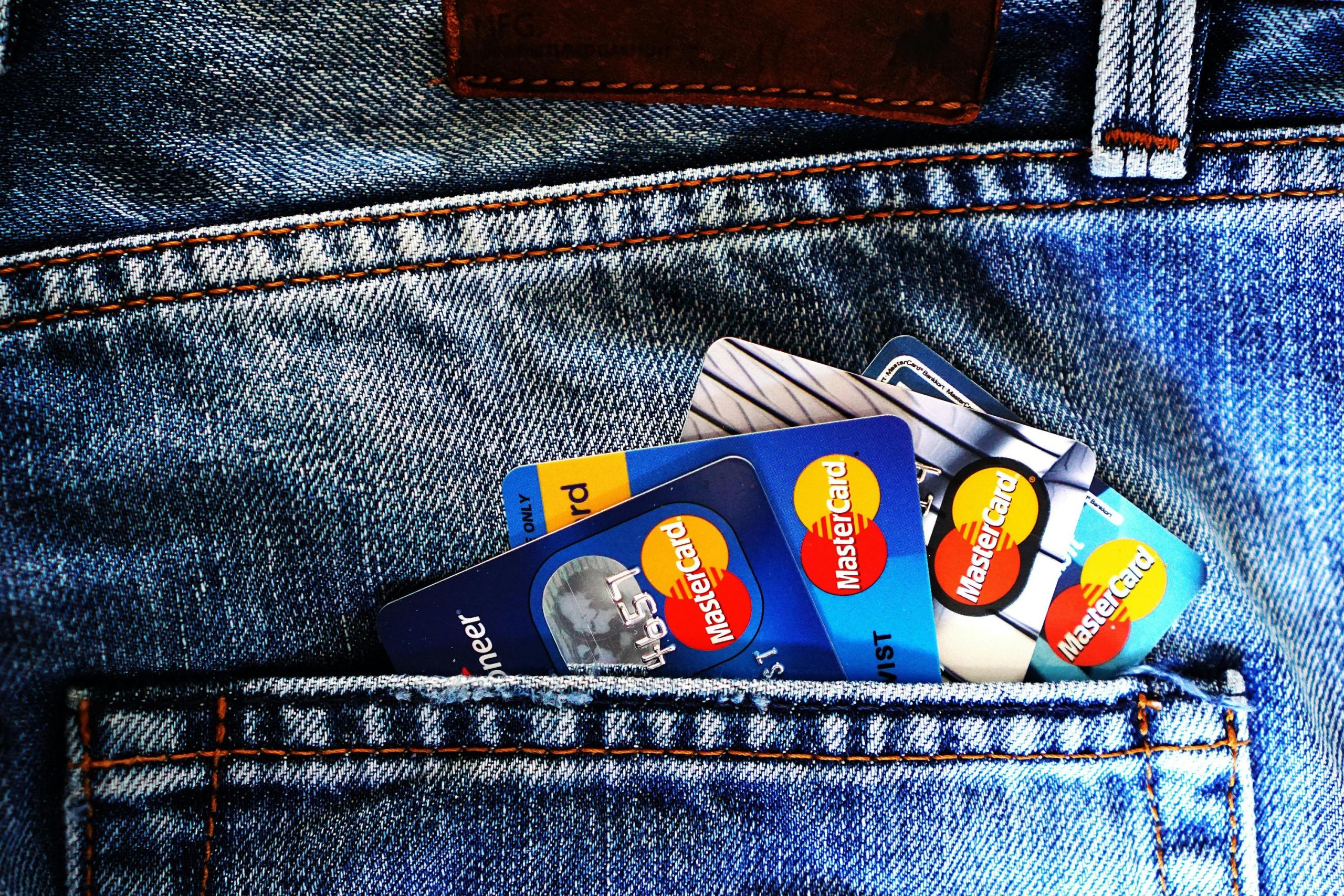How Many Credit Cards Should You Have? A Simple Guide to Managing Your Cards


Credit cards can be an essential tool for managing money, building credit, and even earning rewards. However, many people wonder how many credit cards they should have to make the most of their financial situation without falling into debt. The answer isn’t one-size-fits-all—it depends on your financial habits, goals, and ability to manage multiple accounts responsibly. In this article, we’ll break down how many credit cards you should have, why the number matters, and how to choose the right mix of cards for your needs.
What is the Right Number of Credit Cards for You?
There is no magic number when it comes to how many credit cards you should own. For some people, one credit card is enough to cover all their spending needs. For others, having multiple cards can help maximize rewards, improve credit scores, and give them more flexibility.
However, the key is balance. Having too many credit cards can be overwhelming and lead to missed payments or overspending. On the other hand, having just one or two cards might not give you the benefits that multiple cards could offer, such as cashback, travel rewards, and better credit utilization. So, how do you know what’s right for you? Let’s take a deeper look at the factors that determine how many credit cards you should have.
Factors to Consider When Deciding How Many Credit Cards to Have
1. Your Financial Goals
The number of credit cards you need depends on your financial goals. Are you looking to improve your credit score, earn rewards, or simply manage your expenses better? Here’s a breakdown of how the number of credit cards can align with different goals:
- Building Credit: If your goal is to build or improve your credit score, having multiple credit cards can help. Credit scores are influenced by your credit utilization ratio, which is the amount of available credit you use. A lower ratio (using less of your available credit) can help boost your score. By having more than one card, you increase your total credit limit, which can help you keep this ratio low.
- Maximizing Rewards: If you love earning cashback, travel points, or other rewards, having multiple credit cards can help. Many credit cards offer category-specific rewards, such as 2% cashback on groceries or 5% on travel. Having different cards for different types of spending allows you to take advantage of these offers and maximize your rewards.
- Minimizing Debt: If you’re trying to keep your debt low, you may find that having fewer credit cards works best for you. Too many cards can tempt you to overspend, leading to unnecessary debt. If you’re focused on managing your debt, sticking to one or two cards might be the best option.
2. Your Spending Habits
Another important factor is your spending habits. If you have a strong track record of paying off your balances in full each month and are good at managing your finances, you might be able to handle multiple credit cards responsibly. However, if you tend to overspend or struggle to keep track of payments, it might be better to stick to just one or two cards.
Here’s a quick guideline:
- One or two cards: If you tend to spend on essentials like groceries, gas, and everyday purchases, having one or two cards may be all you need. This makes it easier to track your spending and keep up with payments.
- Multiple cards: If you’re able to keep track of your spending across different categories, multiple cards may be a good fit. Just be sure you can stay organized and avoid missing payments.
3. Managing Payments and Avoiding Late Fees
Managing multiple credit cards requires staying organized. Each credit card will have its due date, and missing a payment can result in late fees, higher interest rates, and a negative impact on your credit score. If you can’t keep track of multiple due dates, having fewer credit cards might help reduce the risk of missed payments.
Here are a few tips to stay on top of your payments:
- Set reminders or use a budgeting app to track due dates.
- Consider setting up automatic payments for at least the minimum amount due.
- If you have multiple cards, keep the ones with the highest interest rates or those you don’t use often paid off first.
Benefits of Having Multiple Credit Cards
Having multiple credit cards can provide a range of benefits if managed correctly. Here are some of the top advantages:
1. Increased Credit Limit
One of the key benefits of having multiple credit cards is the ability to increase your total available credit, which can have a direct impact on your credit score. When you open a new credit card, you automatically get an additional credit limit, which means your overall available credit grows. With more credit available, your credit utilization ratio—defined as the amount of credit you’re using compared to your total available credit—decreases. For example, if you have a $5,000 limit on one card and a $3,000 limit on another, your total available credit is $8,000. If you carry a balance of $2,000, your credit utilization ratio is 25%. A lower credit utilization ratio signals to lenders that you’re using credit responsibly and not overextending yourself, which can positively affect your credit score.
A higher credit limit can also offer additional flexibility in managing your finances. With more available credit, you can make larger purchases, handle unexpected expenses, or cover emergency costs without maxing out your cards. In addition, if you need to carry a balance for a short period, having multiple cards with high credit limits can help prevent high utilization on any single card, further protecting your credit score. However, it’s crucial to avoid getting complacent and using that increased credit irresponsibly. Always remember that more available credit doesn’t mean more disposable income; it’s essential to stay disciplined and pay off balances to maintain healthy credit habits.
2. Maximizing Rewards
Another major advantage of having multiple credit cards is the ability to maximize rewards by using each card for its best benefits. Many credit cards offer various types of rewards, such as cashback, travel miles, or points, but these rewards often differ by category. For instance, one card might give you 2% cashback on dining, while another card might offer 3% cashback on groceries. If you use your cards strategically, focusing on the specific categories where each card offers the most rewards, you can accumulate points or cashback faster. This approach allows you to maximize the rewards from everyday purchases, such as grocery shopping, filling up your gas tank, or dining out.
Having multiple cards for different spending categories can make a big difference over time, especially if you make regular purchases in those categories. For example, if you travel often, using a credit card that offers higher rewards on flights, hotels, and car rentals can help you save money on your trips. Similarly, using a cashback card for routine expenses like groceries or gas can add up over time, giving you extra money back. Keep in mind, however, that rewards should be a secondary consideration to responsible spending. Avoid using your cards simply to earn rewards if it means you’re overspending or accumulating debt that you can’t afford to pay off. By balancing rewards with smart spending, you can enjoy the benefits of multiple cards without falling into financial trouble.
3. Better Financial Flexibility
Having multiple credit cards gives you more options to manage your finances and adapt to various spending situations. Different credit cards come with various terms, including interest rates, benefits, and repayment schedules. For instance, some cards may offer introductory 0% APR for a certain period, which can be incredibly helpful if you need to make a large purchase and want to avoid paying interest for several months. If you’re planning to pay off the balance over time, choosing a card with no interest for an extended period can allow you to make payments without the added pressure of accruing interest charges. This can help you manage large purchases like furniture, electronics, or travel expenses more easily.
Additionally, having a variety of credit cards gives you more flexibility in case of emergencies or unexpected expenses. If you encounter an urgent financial need, having multiple cards with different credit limits gives you more room to handle the cost without exceeding your credit limit. You can also switch between cards depending on the interest rates or benefits available, which makes managing your finances more adaptable to your changing needs. This flexibility is especially useful if you’re using a card for long-term financing or want to take advantage of rewards programs without jeopardizing your financial stability. Ultimately, having multiple cards allows you to choose the best financial tool for each specific situation, providing you with better control over your spending.
Risks of Having Too Many Credit Cards
While having multiple credit cards can offer rewards, higher credit limits, and increased financial flexibility, there are several risks that come with managing numerous accounts. These potential downsides can affect your finances and credit score, especially if not handled responsibly. Let’s take a closer look at some of these risks:
1. Risk of Overspending
One of the biggest risks of having multiple credit cards is the temptation to overspend. When you have several cards, it can feel like you have an endless supply of credit at your disposal. This might encourage you to make purchases you wouldn’t otherwise consider if you only had one or two cards. The more credit you have, the more likely you are to use it, sometimes without thinking about whether you can afford to pay off the balance.
This can quickly lead to accumulating debt that may become difficult to manage. Credit cards often come with high-interest rates, meaning if you’re carrying balances, you could end up paying far more than the original price of the items you’ve purchased. Missing payments or failing to pay off your balance in full each month will only add to the debt, causing it to snowball. Over time, this can negatively affect your finances and your credit score. It’s essential to set a budget, track your spending, and pay off balances regularly to avoid falling into this trap.
2. Complexity and Confusion
Managing multiple credit cards can become overwhelming, especially if you have a busy schedule or struggle with organization. Each card will have its own due date, interest rate, rewards system, and other terms. Trying to keep track of all these details can be confusing, which increases the chances of missing a payment, making a late payment, or paying the wrong amount.
If you forget to make a payment on one card, not only will you incur late fees, but your credit score will also take a hit. If you miss multiple payments, your credit score can drop significantly, making it harder to get approved for loans or other credit cards in the future. Additionally, credit cards with different interest rates can result in more complicated debt management. You might pay off the wrong card first, leaving you with high-interest balances that grow over time.
To avoid these issues, it’s important to stay organized. Setting reminders for payment due dates, using apps to track your cards, or even consolidating your payments into one or two cards can help simplify the process. If you find it too hard to manage multiple cards, it might be worth reducing the number of credit cards you have.
3. Potential for Lower Credit Scores
Having many open credit cards can impact your credit score in several ways. First, when you apply for new credit cards, a “hard inquiry” is made on your credit report. Each hard inquiry can cause a slight temporary dip in your credit score. Applying for multiple cards in a short period of time can result in several inquiries, which can raise a red flag for lenders and decrease your score.
Secondly, if you accumulate balances on multiple cards, you might increase your credit utilization ratio. This ratio is the percentage of your available credit that you’re using. For example, if you have a total credit limit of $10,000 across all your cards and carry a balance of $5,000, your credit utilization is 50%. Credit experts recommend keeping this ratio below 30%, as higher usage can indicate to lenders that you may be financially overextended. If your credit utilization ratio is too high, your credit score can drop, even if you are making timely payments.
Lastly, having too many credit cards with high balances can make it harder to manage your finances effectively. If you are unable to keep your balances low or pay off your cards in full each month, you may face difficulties paying down your debt, which can also negatively affect your credit score in the long run.
How Many Credit Cards Should You Have?
So, how many credit cards should you have? There’s no one-size-fits-all answer. It ultimately depends on your spending habits, financial goals, and ability to manage credit responsibly. As a general rule:
- 1–2 cards are great for people who prefer simplicity and want to avoid the risk of overspending.
- 3–4 cards might be ideal for those who want to maximize rewards and have a good track record of managing credit.
- 5 or more cards might work for individuals who are highly organized, have a strong financial plan, and want to take advantage of specific benefits.
The important thing is to use the cards responsibly. Pay off your balances on time, avoid using too much of your credit limit, and monitor your spending.
Managing Your Credit Cards Wisely
Knowing how many credit cards you should have is about finding the right balance between your financial goals and your ability to manage credit. While having one or two cards can be sufficient for many people, others may benefit from multiple cards to maximize rewards or improve their credit score. The key is to stay organized, avoid overspending, and make sure you can keep up with payments. If you can do that, you’ll be able to use your credit cards to your advantage and enjoy the financial benefits they offer.




